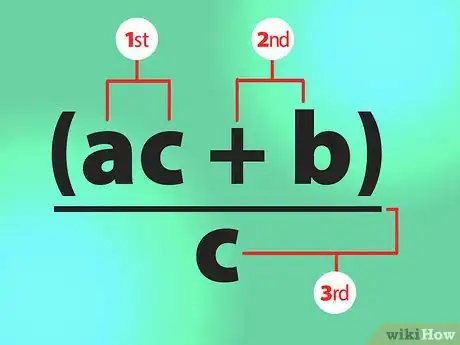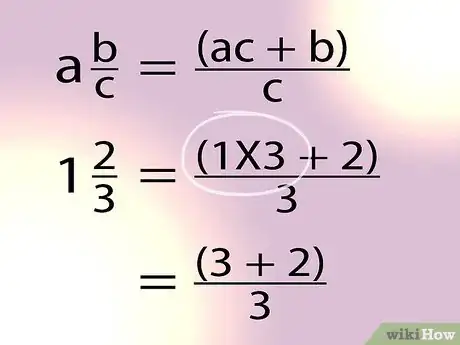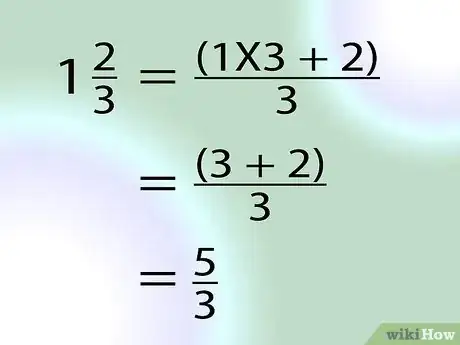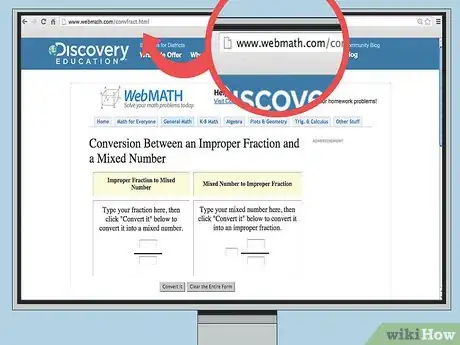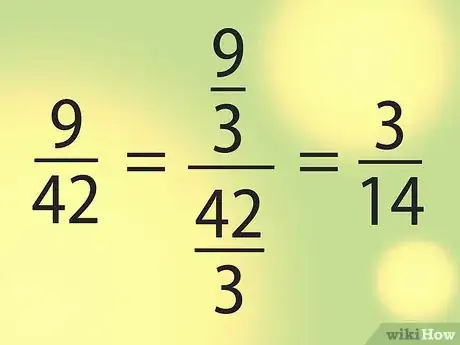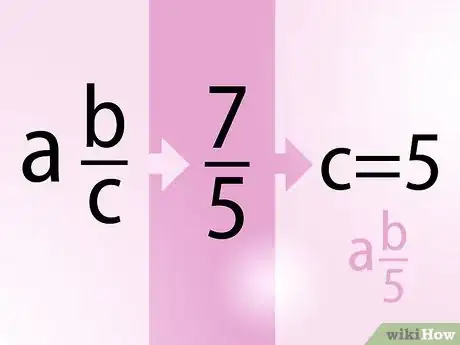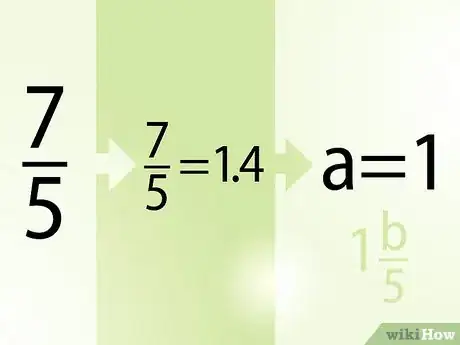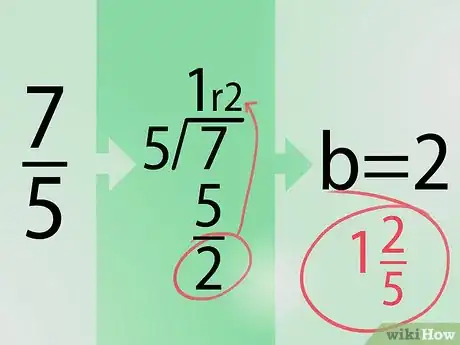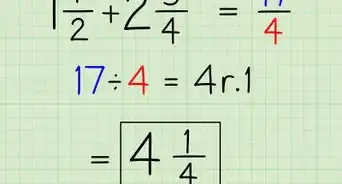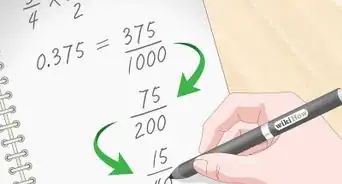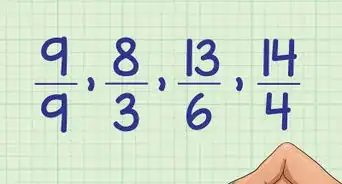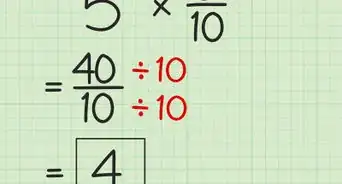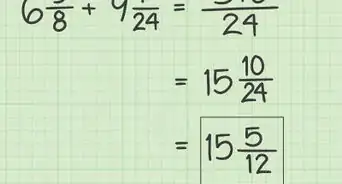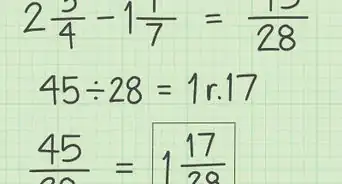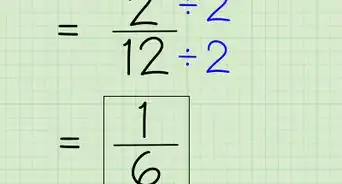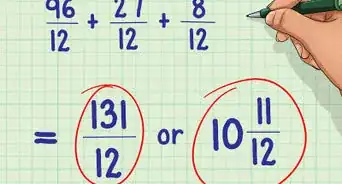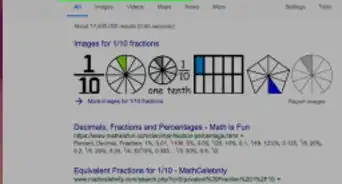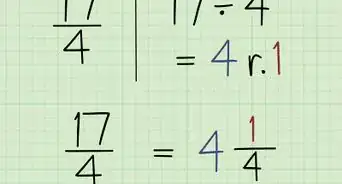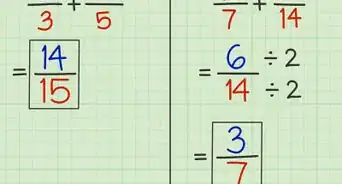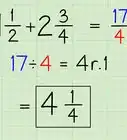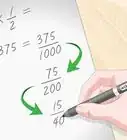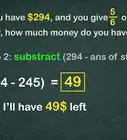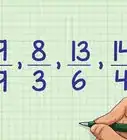This article was co-authored by Jake Adams. Jake Adams is an academic tutor and the owner of Simplifi EDU, a Santa Monica, California based online tutoring business offering learning resources and online tutors for academic subjects K-College, SAT & ACT prep, and college admissions applications. With over 14 years of professional tutoring experience, Jake is dedicated to providing his clients the very best online tutoring experience and access to a network of excellent undergraduate and graduate-level tutors from top colleges all over the nation. Jake holds a BS in International Business and Marketing from Pepperdine University.
There are 8 references cited in this article, which can be found at the bottom of the page.
This article has been viewed 87,350 times.
A mixed number is one that contains both a whole number and a proper fraction (a fraction where the numerator is smaller than the denominator). For instance, if you’re baking a cake and need 2 ½ cups of flour, that’s an example of a mixed number. Mixed numbers can be converted into improper fractions, where the numerator is larger than the denominator. Converting a mixed number into an improper fraction uses a basic formula. Performing the conversion can make your numbers easier to work with in an equation, or may help you to make sense of an answer you’ve reached.[1]
Steps
Converting a Mixed Number to an Improper Fraction
-
1Learn the basic equation. If a mixed number is a b/c then the equation used to convert it to an improper fraction is (ac+b)/c.[2] In this equation:
- A is the whole number.
- B is the numerator (the top portion of the fraction).
- C is the denominator (the bottom portion of the fraction).
-
2Remember the order of operations. BEDMAS or PEMDAS dictates that you must first address the numbers in parentheses.[3] Since multiplication and division come first, you will first multiply ac. You will then add b, since that figure is also within parentheses. Finally, you will divide by c, or use c as the new denominator.
- P/BEDMAS stands for parentheses/brackets, exponents, multiply or divide, and add or subtract.
Advertisement -
3Multiply the whole number and the denominator. Take the mixed number 1 ⅔ for example: a = 1, b = 2, and c = 3. Multiply ac, which in this example is 3 x 1 = 3.[4]
-
4Add the numerator to the product. You now know the product of ac = 3, so now it's time to add b = 2: 3 + 2 = 5.[5] This sum, 5, is the new numerator of your improper fraction.
-
5Rewrite the improper fraction with the new numerator. Remember that the denominator (c = 3) remains the same from the original fraction, and the new numerator is 5. The improper fraction converted from the original mixed number, therefore, is 5/3.
-
6Check your work. To be certain, you can always double check your math by running the numbers again, or verifying the answer using an online calculator.
-
7Reduce the fraction to its simplest form if necessary. The simplest form is the smallest and easiest way to represent a fraction. To reduce a fraction to its simplest form, determine if the numerator and denominator have common factors. If they do, select the highest one and divide the numerator and denominator by that number.[6]
- For instance, in the fraction 9/42, the greatest common factor is 3.
- Divide both the numerator and denominator by the greatest common factor to get the fraction's simplest form: 9 ÷ 3 / 42 ÷ 3 = 3/14
- If you'd like to write the fraction as a decimal, simply divide the numerator by the denominator.
Changing an Improper Fraction to a Mixed Number
-
1Remember the mixed number formula. Just as you can convert a mixed number into an improper fraction, so too can you convert going the other way. Like before, use the formula a b/c for your mixed number. The denominator from your improper fraction will be the same denominator in your mixed number.[7]
- For instance, when converting the improper fraction 7/5 into a mixed number, c = 5.
-
2Divide the improper fraction’s numerator by its denominator. Use long division or a simple calculation to determine how many times the denominator will fully go into the numerator (don't worry about any decimals). That number will be the mixed number’s whole number (the a value).
- Dividing 7/5 gives you 1.4, where a = 1.
-
3Determine the remainder. The remainder is your new numerator. When you divide 7/5 you get 1 with a remainder of 2, where b = 2. You now have all the components of your mixed number: the improper fraction 7/5 gives you the mixed number 1 ⅖.[8]
Community Q&A
-
QuestionWhat is 2 1/3 as an improper fraction?
 DonaganTop Answerer7/3.
DonaganTop Answerer7/3. -
QuestionWhat is the mixed number of 23?
 DonaganTop AnswererA whole number (such as 23) cannot be expressed as a mixed number. (You could say something like, "23 = 22-2/2," but that would be rather pointless.)
DonaganTop AnswererA whole number (such as 23) cannot be expressed as a mixed number. (You could say something like, "23 = 22-2/2," but that would be rather pointless.) -
QuestionHow do I solve this: Jayden and Sitar share a reward of $140 in a ratio of 2:5. What fraction of the total reward does Jayden get?
 Community AnswerAdd 2 + 5 = 7. Jayden gets 2/7 of the reward money, Sitar gets 5/7.
Community AnswerAdd 2 + 5 = 7. Jayden gets 2/7 of the reward money, Sitar gets 5/7.
Expert Interview
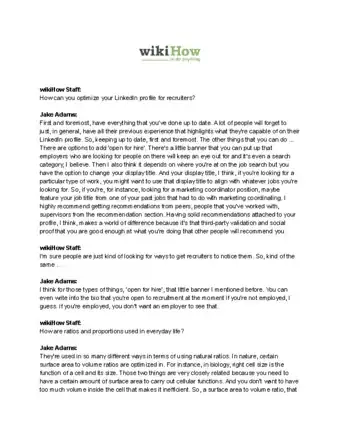
Thanks for reading our article! If you'd like to learn more about learning mathematics, check out our in-depth interview with Jake Adams.
References
- ↑ http://www.virtualnerd.com/middle-math/number-theory-fractions/mixed-numbers-improper-fractions/improper-to-mixed-fraction-conversion
- ↑ http://www.calculatorsoup.com/calculators/math/mixed-number-to-improper-fraction.php
- ↑ https://www.mathsisfun.com/operation-order-pemdas.html
- ↑ http://www.factmonster.com/ipka/A0933459.html
- ↑ https://www.khanacademy.org/math/arithmetic/fractions/mixed_numbers/v/changing-a-mixed-number-to-an-improper-fraction
- ↑ https://www.mathsisfun.com/simplifying-fractions.html
- ↑ https://www.calculatorsoup.com/calculators/math/fractionssimplify.php
- ↑ https://www.khanacademy.org/math/cc-fourth-grade-math/imp-fractions-2/imp-mixed-numbers/a/mixed-numbers-and-improper-fractions-review
About This Article
To change mixed numbers to improper fractions, use the formula: (ac+b)/c, where a is the whole number, b is the numerator, and c is the denominator. First, multiply the whole number and the denominator. Then, add that number to the numerator to find the new numerator. Finally, place the new numerator over the original denominator to get the improper fraction. If you want to learn how to reduce your improper fraction, keep reading the article!

